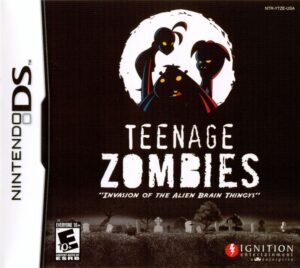Retro Replay Review
Gameplay
Lost in Blue 3’s core gameplay loop revolves around survival and exploration. Players must juggle essential elements like food, water, and shelter while contending with an unforgiving island environment. Resource gathering—whether fishing at the riverbank, hunting small game in the jungle, or foraging for edible plants—feels meaningful, as every bit of nourishment directly impacts your character’s health and stamina meters.
(HEY YOU!! We hope you enjoy! We try not to run ads. So basically, this is a very expensive hobby running this site. Please consider joining us for updates, forums, and more. Network w/ us to make some cash or friends while retro gaming, and you can win some free retro games for posting. Okay, carry on 👍)
The game introduces four distinct protagonists—two unlocked at the start and two unlockable upon beating the game—each of whom brings unique strengths and weaknesses to the table. Whether you prefer a character who excels at crafting sophisticated tools or one who has superior stamina for long treks, the decision affects how you approach puzzles and challenges. As you progress, flashback sequences provide critical clues to escape the island, making exploration and story revelations interwoven.
Variety is further enhanced by no fewer than 20 minigames, from adrenaline-pumping river rafting to a tranquil dolphin interaction sequence. These diversions break up the survival grind without feeling like disconnected distractions. Completing them not only rewards players with useful items and stat boosts but also offers refreshing changes of pace.
Online features add another layer to gameplay. Single-card play lets friends join in on a handful of minigames, while multi-card connectivity unlocks head-to-head cooking competitions. These co-op and versus modes extend the game’s longevity, turning survival mode from a solitary struggle into a shared experience.
Graphics
On the Nintendo DS, Lost in Blue 3 delivers surprisingly detailed environments. The coastal beach areas shimmer under sunlight, while dense jungle interiors are rich with vibrant foliage and roaming wildlife. Character models, though modestly polygonal, are expressive enough to convey emotion through gestures and facial animations in cutscenes.
Dynamic weather effects are a standout feature. Sudden tropical downpours blur the horizon, and lightning storms illuminate the canopy in stark flashes. These visual flourishes not only look impressive on the dual screens but also tie directly into gameplay by threatening your character’s health during severe weather events.
The user interface is clean and intuitive, with inventory and status bars neatly organized on the touchscreen. Crafting recipes and map annotations are easy to navigate with the stylus—an essential consideration when you’re racing against time to combine items or mark supply caches.
Performance is generally steady, with load times kept to a minimum. Even in more asset-heavy scenes—such as earthquake sequences or crowded minigames—the frame rate remains stable, ensuring the experience never feels disrupted.
Story
Lost in Blue 3 employs a layered narrative structure, unfolding the backstory of each character through intermittent flashbacks. These glimpses into past events not only reveal personal motivations but also provide hints on how to tackle certain puzzles and survival scenarios on the island. The flashback mechanic is well-paced, ensuring you’re constantly curious about the next twist.
Each protagonist’s storyline offers a different perspective on the events that led to the island stranding. Whether it’s a stranded sailor grappling with guilt or a resourceful teenager determined to reunite with family, the personal arcs feel fleshed out and compelling. Playing through all four campaigns encourages multiple playthroughs, as you gradually piece together the full narrative mosaic.
Pacing strikes a solid balance between high-stakes moments—such as narrowly escaping a freak lightning strike—and quieter intervals when you craft new tools or enjoy serene dolphin interactions. This ebb and flow prevents the story from feeling monotonous and keeps tension alive.
While the overarching goal remains the same—survive and escape—the emotional beats hit home. You’ll grow attached to your chosen character’s struggles and victories, making the eventual escape feel all the more rewarding.
Overall Experience
Lost in Blue 3 masterfully blends survival simulation with adventure and narrative depth. Its exploration mechanics, resource management, and engaging minigames create a diverse gameplay experience that rarely feels repetitive. The addition of online multiplayer modes further extends replay value, catering to both solo players and those looking for cooperative fun.
Graphically, the game punches above its weight on the DS hardware, delivering lush environments and dynamic weather that enhance immersion. The storytelling via flashbacks and multiple character routes ensures that each playthrough reveals fresh details, inviting players to revisit the island again and again.
If you’re a fan of survival adventures, hand-held charm, or character-driven narratives, Lost in Blue 3 is an excellent choice. Its thoughtful difficulty curve and optional minigames accommodate both casual players and those seeking a strategic challenge.
In summation, Lost in Blue 3 offers a robust, well-rounded package. From the satisfying crunch of foraging resources to the emotional payoff of uncovering each character’s past, this entry in the series stands out as a must-play for anyone intrigued by deserted-island survival tales.
 Retro Replay Retro Replay gaming reviews, news, emulation, geek stuff and more!
Retro Replay Retro Replay gaming reviews, news, emulation, geek stuff and more!




Reviews
There are no reviews yet.